 Post-Procedure Oral Healthcare – Allen, TX
Post-Procedure Oral Healthcare – Allen, TX
Helping Your Child Recover
After Care
Our dentists are dedicated to providing the most gentle care possible, no matter what treatment your child needs. However, there are instances where certain steps must be taken to alleviate dental concerns. In these situations, your child may need some extra time and attention to recover. Below, you’ll find some important tips and tricks to keep in mind should your child need local anesthetic, crowns, pulp therapy and more. If you have additional questions, please call us.
Local Anesthetic
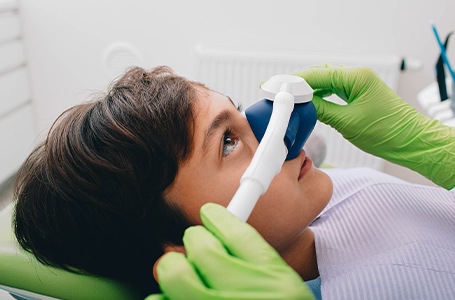
If your child needs to have local anesthetic administered ahead of a procedure, it will take some time for the effects to wear off. This means their lips, tongue, gums, and cheeks will likely feel numb, fuzzy, or tingly for the next few hours. We ask that you reassure them this feeling is only temporary and closely monitor and prevent them from biting down or sucking on the numbed portions of their mouth. Failing to do so could lead to facial swelling, bleeding and macerated tissue.
In the event their mouth does begin to bleed or swell, don’t panic. Start by keeping the area clean with a gauze pad or damp washcloth and have them rinse their mouth out with warm salt water. If possible, ask them to gently press a cold compress to their face to reduce swelling. Give them child-safe ibuprofen if discomfort is present.
If your child becomes upset as a result of the numbness, offer them something cold to suck on. This could be a popsicle, but avoid ice cubes. Watch your child closely when providing them food if the effects of the anesthetic have not worn off. This will help reduce their risk of lip injury due to accidental biting or sucking.
Tooth Extractions
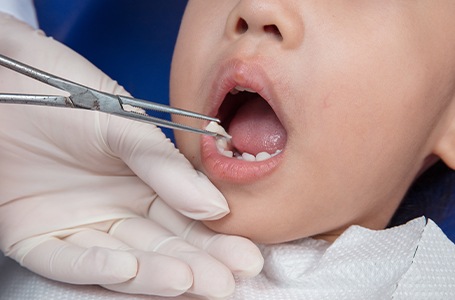
Your child’s extraction site could bleed a little the same day their tooth is removed, so don’t be too alarmed if this occurs. Over the next few days after the procedure, minor bleeding when brushing, eating and sleeping could happen. If it does, locate a clean gauze or cloth and have them bite down on it for five minutes. Call our dental office if bleeding does not subside by then.
We want to make sure a blood clot forms over the area of the extraction site, which is why it’s best for your child to avoid sucking on straws or spitting with force. Doing so could cause the clot to dislodge and lead to dry socket. Do not let them chew on anything hard or crunchy over the next several days, such as nuts or seeds (which can get dislodged inside the healing tissue). Keep the area around the treatment site as clean as you can. Have them gently brush around it twice a day and encourage them to rinse their mouth out with warm salt water. This can speed up the recovery process. Do not hesitate to give them child-safe ibuprofen if they need to alleviate discomfort.
Dental Crowns
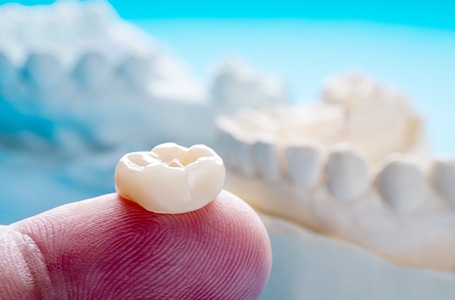
It’s normal for children to receive local anesthetic prior to a crown placement. After their treatment, be sure to follow all instructions provided by our team that explain how to handle feelings of numbness as well as accidental injuries to their mouth that could occur.
Ahead of crown placement, there may be some minor bleeding and irritation around the gums. This is due to the steps required to prepare a tooth for crown placement. After Dr. Justin or Dr. Sage place the crown over your child’s tooth, they are then sent home. Make sure that the treated area stays clean and that they brush and floss regularly to promote healing. When they floss, have them remove the floss by sliding it out from in between teeth. Do not let them pull it back up out of the contact point of the teeth. Doing so could dislodge the crown. We also recommend avoiding hard, crunchy, or sticky foods as they recover.
Pulp Therapy/Pulpotomy
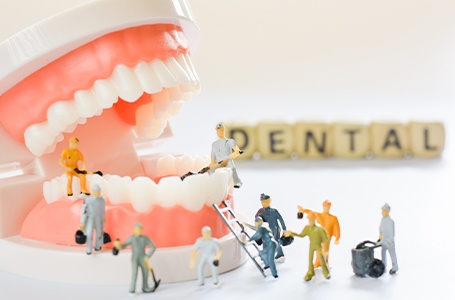
The good news is this type of procedure won’t come with a long recovery period. The best thing you can do is offer them soft foods over the next several days. By doing so, they are less likely to experience discomfort or pain while they heal.
Tooth-Colored Fillings
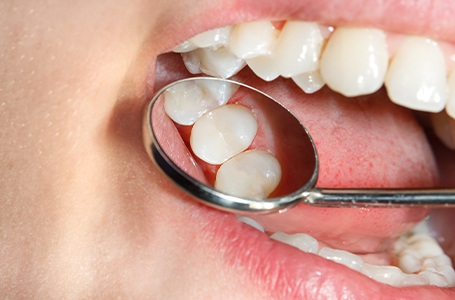
One of the many benefits of tooth-colored fillings compared to traditional amalgam is they won’t wear down as easily. In the event your child is about to receive tooth-colored fillings, you can be comfortable knowing the procedure is largely pain-free and minimal in nature. If we are providing a local anesthetic, they may feel slight discomfort afterward. This is mainly from the numb or tingly sensation of the anesthetic and not from the tooth. If your child notices pain while chewing or any sensitivity when consuming hot or cold foods/beverages, call our dental office.
Frenectomy - Lip & Tongue-Tie Release
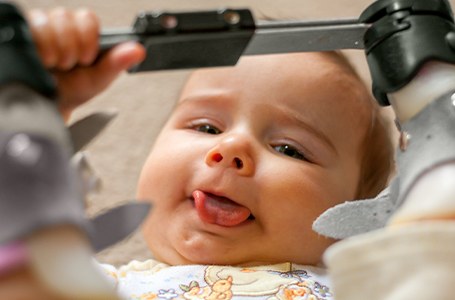
Following a laser frenuloplasty or frenectomy, it’s common for there to be swelling over the next one to three days. About one hour after your child’s surgery, the anesthesia will continue slowly wearing off. Do your best to keep their hands away from their mouth. While it varies from age to age, mild discomfort is likely following their procedure, generally one to two days afterward. Using a cold compress is a great way to help toddlers and older children reduce swelling and discomfort. If your child is over 6 pounds, give them Tylenol every six hours to reduce any pain. Your child should only receive ibuprofen, Motrin, or Advil if they are 6 months or older.
It is common for children to have difficulty sleeping, changes in their behavior, or exhibiting changes in their nursing pattern within the first 72 hours following this type of treatment. After about three days, they should begin to improve.
Helpful Tips to Perform Stretches
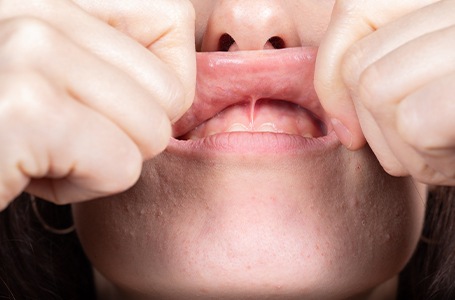
On top of managing discomfort and swelling, you’ll want to help your child perform stretches to ensure the removal sites can return to normal. Consider the following helpful tips to accomplish this below:
Stretching the Upper Lip
- Use clean or gloved fingers to apply pressure all the way in the fold (vestibule) of the lip and pull the lip up and out as high as you can. This will let you see the white diamond and cover the nostrils. You may notice the surgical area bleed slightly the first day or when performing this stretch. Keep in mind this is normal so do not be alarmed if it occurs.
- As you stretch the upper lip, hold it and lift it towards the nose four times.
- Next, place your finger at the bottom of the revised area. Gently move it upwards.
- Simultaneously, press the finger inward and move it up and under the lip and toward their nose.
- Finally, move your finger up and down in the same motion at least four times. Then, switch and move it side to side four more times.
Stretching the Tongue
- With your dominant hand, take your pointer finger and insert it into the mouth, either from the side or front.
- Use your finger to gently press down on the middle portion underneath their tongue and lift it in a C-shaped motion. This will lift the tongue up and back just above the white diamond, putting tension on the wound. Hold it for at least 10 seconds. Perform this same movement four more times.
- Place your baby or child on your lap. Move their feet away from you and perform these stretches two times a day. They will need to be completed until the area reaches a natural pink color.
- Trim your fingernails ahead of time and wash your hands with soap and water before performing these stretches. This will minimize germs and prevent harm to their sensitive gum tissue.
- Use cold water or ice to keep your hands cold ahead of performing these stretches.
- You’ll want to focus on opening the released tissue to expose the “diamond” shape all the way up on the lip and tongue. If the lip or tongue is healing tight, stretch it further to open it back up. Be ready as this may cause slight bleeding,
- Repeat this post-procedure about six times spaced out throughout the day. At minimum, you should perform this stretch at least four times a day. Be sure to leave time in between so as not to overwork their mouth.
- Repeat this daily routine over the next three weeks. After the fourth week begins, decrease the number of stretches performed until the end of the week.
- At other times, you should play in your child’s mouth a few times a day using clean fingers. This will help avoid oral aversion and may include tickling the lips, gums, and allowing your child to suck on your finger.
- Infants that have recently completed a frenectomy should be given Tummy-Time as much as possible. Visit TummyTimeMethod.com to learn more.
- As the released area heals, it will form a wet scab after about 24 hours and appear white and soft. In some cases, it can turn to a yellow or green color but this should NOT be confused with an infection. The white or yellow areas will get smaller by the day but healing is in fact happening. Even as the white scab heals, you should continue stretching or the frenum won’t be as long as it could be. This may result in needing additional surgery. If you have any concerns, contact our dental office.
